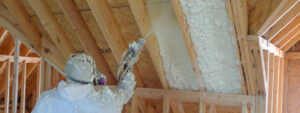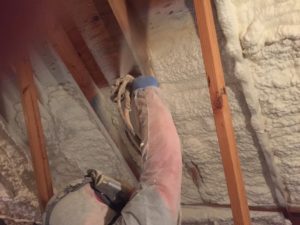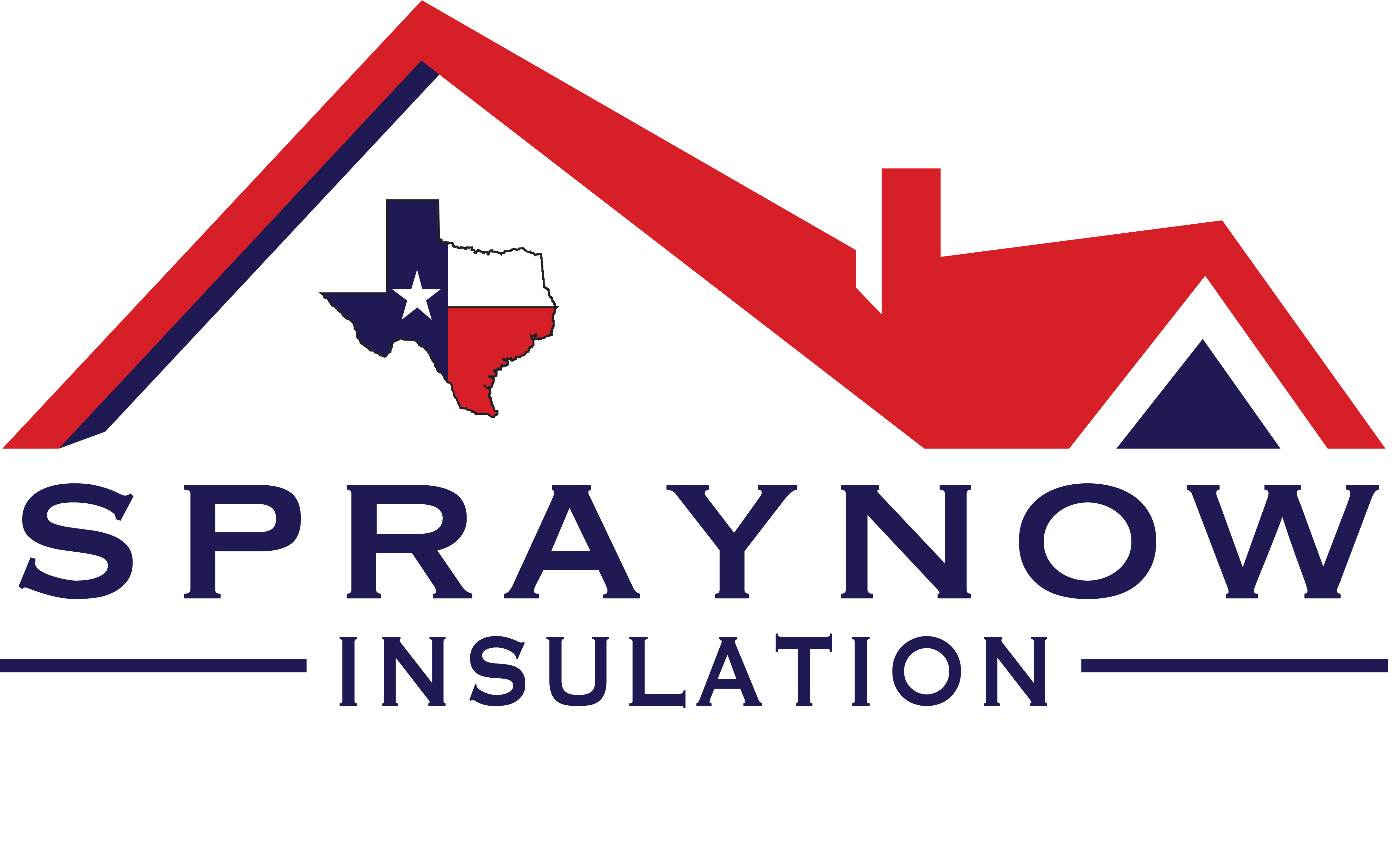Premier Attic Insulation Lewisville TX & Surrounding Areas
SprayNow Insulation – Our Service Area
SprayNow Insulation Proudly Serves Lewisville, TX & Surrounding Areas!
Facts & Stats
- Attic insulation is important to regulate temperature and reduce energy loss in homes.
- Lewisville, Texas, is a city where attic insulation plays a crucial role in maintaining comfortable indoor temperatures.
- Proper insulation helps lower heating and cooling costs in Lewisville homes.
- Attic insulation can also improve the overall energy efficiency of a house.
- Insulating your attic can help reduce heating and cooling costs by an average of 20%.
- Over 90% of homes in Lewisville, TX could benefit from improved attic insulation.
- Investing in attic insulation can provide a return on investment (ROI) of up to 5 times the initial cost over time.
- Properly insulated attics can increase the comfort level in a home by up to 50%.
- Up to 30% of a home’s energy loss can occur through the attic without proper insulation.
Attic Insulation Frequently Asked Question
Which type of attic insulation is best for energy efficiency in Lewisville, TX?
When it comes to maximizing energy efficiency in attic insulation in Lewisville, TX, the best option is undoubtedly spray foam insulation. Spray foam insulation creates a seamless and airtight barrier that effectively prevents air leakage and heat transfer, resulting in significant energy savings. Its unique composition allows it to expand and fill every nook and cranny, ensuring complete coverage and minimizing thermal bridging. Additionally, spray foam insulation has a high R-value, which measures its resistance to heat flow, making it an excellent choice for the hot climate of Lewisville, TX. By choosing spray foam insulation for your attic, you can enjoy superior energy efficiency and lower utility bills all year round.
How do I know if my attic needs insulation?
To determine if your attic needs insulation, there are a few key indicators to look out for. First, check the temperature in your home during extreme weather conditions. If you notice significant fluctuations or difficulty maintaining a comfortable temperature, it could be a sign that your attic lacks proper insulation. Additionally, keep an eye on your energy bills. If they have been steadily increasing without any changes in your usage habits, this may also suggest insufficient insulation. Lastly, inspect the attic itself for any visible signs of insulation damage, such as gaps or areas with thin coverage. By considering these factors, you can gain a better understanding of whether or not your attic requires insulation.
What are the benefits of attic insulation?
Attic insulation provides numerous benefits for homeowners in Lewisville, TX. Firstly, it helps to regulate the temperature inside the house by preventing heat loss during the winter and heat gain during the summer. This not only ensures a comfortable living environment but also reduces energy consumption and lowers utility bills. Additionally, attic insulation acts as a barrier against moisture, preventing condensation and mold growth, which can be detrimental to both the structure of the house and the health of its occupants. Furthermore, it helps to reduce noise transmission from outside, creating a quieter and more peaceful indoor atmosphere. Lastly, attic insulation improves the overall energy efficiency of a home, making it more environmentally friendly and increasing its resale value.
How can attic insulation help with energy efficiency in Lewisville, TX?
Attic insulation plays a crucial role in enhancing energy efficiency in Lewisville, TX. By properly insulating the attic, homeowners can prevent heat transfer between the living space and the outdoors, thus reducing the need for excessive heating or cooling. In this region, where temperatures can soar during summer and drop significantly in winter, a well-insulated attic acts as a thermal barrier, preventing conditioned air from escaping and outside air from infiltrating. This not only helps maintain a comfortable indoor temperature year-round but also reduces the strain on HVAC systems, leading to lower energy consumption and utility bills. Additionally, attic insulation can contribute to noise reduction by acting as a sound barrier, providing homeowners with a quieter living environment.
What should I consider when hiring a contractor for attic insulation in Lewisville, TX?
When hiring a contractor for attic insulation in Lewisville, TX, there are several key factors to consider. Firstly, it is important to ensure that the contractor has proper licensing and certifications, such as being a member of the Spray Polyurethane Foam Alliance (SPFA). This ensures that they have undergone rigorous training and adhere to industry standards. Additionally, it is crucial to inquire about their experience in working with attic insulation specifically, as this requires specialized knowledge and techniques. Asking for references and checking online reviews can also provide insight into their reputation and the quality of their work. Lastly, obtaining multiple quotes and comparing pricing is essential to ensure you are getting a fair price for the services provided.
Attic Insulation in Lewisville, TX: A Guide for Energy Efficiency

Using spray polyurethane foam is a popular method that homeowners can employ to insulate their attic and safeguard their residence against weather and moisture-related harm.
- Traditional methods of construction in the field of building science.
- Application of spray foam insulation on the floor of a vented attic
The specific method of applying spray foam in the attic can often be determined by the building science and design principles that your builder or architect adheres to. In a traditional vented attic configuration, insulation is installed on the attic floor to protect the ceiling from fluctuating temperatures, both cold and hot, throughout the year. In the area amidst the floor joists, where conventional cellulose and fiberglass insulation is typically employed, spray foam is also administered. Nonetheless, no insulation is utilized for the remaining section of the attic. The attic is well-ventilated through the inclusion of soffit, ridge, and gable vents. While it may not be the most efficient system, it is widely employed as the predominant engineered method across the United States.
Members of the spray foam industry regard this method as the most efficient technique since it successfully seals and insulates the entire attic area, preventing any air infiltration. The application of foam between the joists, on the gable wall ends, and along the rim and soffits underneath the roof effectively establishes an airtight barrier.
The conventional method of insulating the inner side of the roof in the attic has sparked considerable discussion within the construction sector due to conflicting opinions on whether the attic should be ventilated according to “standard” roofing and design practices. The purpose of ventilation is to mitigate issues related to excess moisture and heat accumulation during the summer season.
Nonetheless, within a ventilated attic, temperatures can rise to around 130 degrees during the summer months. It is unnecessary for your air conditioning system and ventilation ductwork to endure such extreme circumstances. Moisture can also accumulate as a result of condensation on these devices.
In order to effectively insulate the attic and prevent the transfer of intense heat from the roof, sheathing, and shingles, it is necessary to directly apply spray foam insulation to the underside of the roof deck. This application ensures that the attic is properly insulated and shields it from extreme temperature conditions. As a result of this transformation, the attic becomes just as cozy as any other area within the house, given that it is now classified as a “conditioned” space.
According to designers and builders, there is an argument that suggests this system has the potential to result in overheating and subsequent curling off of the shingles on your roof. This occurrence is said to be attributed to the necessity for wood to have proper ventilation.

After conducting thorough research, it has been discovered that the concern regarding “breathing wood” is rather insignificant, as the majority of furniture manufacturers subject wood to kiln drying before incorporating it into their products. Extensive investigations have revealed that these manufacturers argue that allowing wood to “breathe” can accelerate its degradation. Wood that has been kiln dried contains a minimal amount of moisture and is commonly employed in the manufacturing of furniture. This moisture content can lead to the formation of cracks and splits as the wood further undergoes the drying process. Manufacturers are aware that it is crucial to thoroughly seal wood, prompting them to exercise additional precautions to ensure its complete sealing. However, if furniture is adequately finished and maintained, it would not encounter this issue, further supporting the rationale behind painting both the interior and exterior of our fences and homes. We invite you to observe the wooden fence that you installed a few years ago, which is currently deteriorating due to neglecting its ventilation and resulting in decay. In response to this situation, we pose the following inquiry. Is choosing wood as a material that allows for proper airflow the superior choice?
In regards to the assertion made by GAF Building Products, a prominent manufacturer of shingles, stating that their company does not encounter any issues with utilizing an unvented roof deck and allowing for excessive shingle usage, we pose the following question. “Is the issue of curling shingles significant?”
When spray foam is applied to a roof, it can reduce energy consumption in multiple ways. It has the ability to effectively eliminate energy loss from ducts situated in the attic. By minimizing both infiltration and exfiltration, the attic becomes less susceptible to the entrance of excess moisture, as the upper section of the structure is more airtight. Additionally, the application of spray foam decreases the occurrence of infiltration through the ceiling. By lowering the temperature in the attic, it results in a decrease in energy consumption.
Throughout the summer season, conventional ceiling insulation minimizes heat transfer from the attic to the living area. During daylight hours, attic temperatures can reach as high as 140F. Heat enters the attic space through a multi-step process. To begin, solar energy heats up the shingles and sheathing, causing them to be affected by the heat. Subsequently, thermal energy propagates to the remainder of the attic by means of convection and conduction originating from the heated sheathing. The mechanism of heat transfer is primarily influenced by the temperature of 140F on the underside of the roof surface.
When spray foam insulation is applied to the roof surface, it can result in a decrease of approximately 40F in the temperature that drives heat transfer. This temperature refers to the surface exposed to the attic. The reduction in heat transfer is directly proportional to the decrease in surface temperature, as both convection and conduction are influenced by differences in temperature.
Incorporating the attic within the insulated area can provide advantages such as:
- Significant reductions are achieved in heat gain/loss from ducts, as well as in the occurrence of duct leakage.
- Preventing air infiltration by sealing the roof is a more practical option compared to sealing the ceiling.
- The presence of loose insulation and dust will be reduced in the living area.
- Upon sealing the attic, tests indicate a decrease in energy expenses.
Additional details can be obtained from ASHRAE (8700-527-4723) through a publication entitled “Vented and Sealed Attics in Hot Climates.”
Proper insulation can significantly reduce heating and cooling costs, enhance home comfort, and improve air quality.
For further information or to schedule a consultation, visit SprayNow Insulation’s home page or their contact page.
